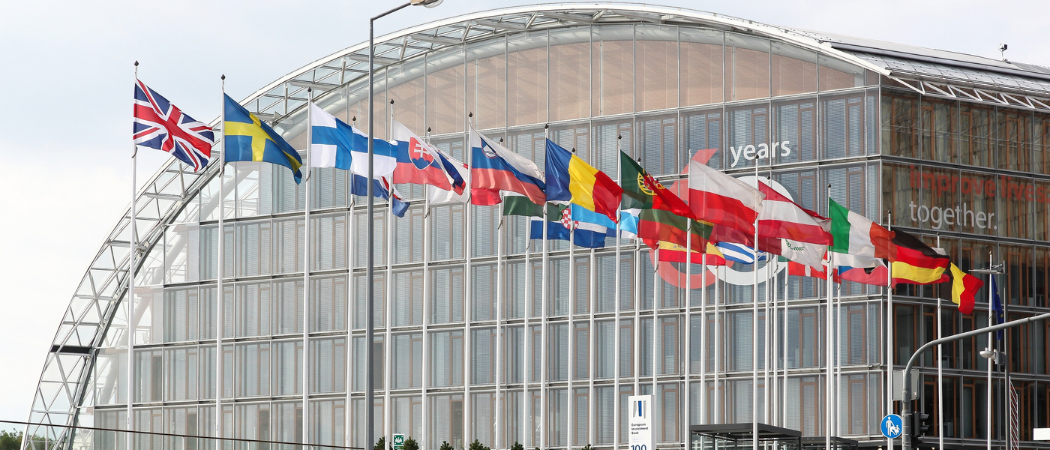Funding, mapping and coordination of technology infrastructures to be addressed in a forthcoming Commission strategy

European Investment Bank headquarter in Luxembourg. Photo credits: ricochet64 / BigStock
The EU will have to find between €13 billion and €16 billion to invest in technology infrastructures by 2030, if these facilities are to make the desired contribution to innovation and competitiveness, according to a study prepared for the European Investment Bank (EIB).
This would mean a 200% increase in funding compared to current levels of investments, according to study co-author Sophie Viscido of Technopolis Group, who presented the results at conference in Warsaw organised by the EU presidency on May 6-7.
Financing needs are particularly expected to grow in AI, quantum, aviation, space, defence and robots, she said.
There will also need to be a shift in where this funding comes from. At present, the main sources of support for technology infrastructures are competitive grants (37%), base public funding (28%) and internal reserves of the organisations that develop them (21%). Only 3% comes from financial instruments and 1% from private funding, sources that are expected to bear more of the burden in future.
The context for the study, and the conference, is a forthcoming strategy on research and technology infrastructures, currently being prepared by the European Commission for publication in the third quarter of 2025. Mapping, coordinating and supporting research infrastructures has been part of the policy mix for decades, but technology infrastructure gets far less attention.
Broadly speaking, technology infrastructures are facilities and equipment that allow companies to develop, test and scale up technology. These help lower the cost of innovation, and this makes them a good investment in the future of Europe’s technology sovereignty and competitiveness.
One notable example is the planned AI giga-factories for training very large AI models. The EU will mobilise €20 billion to support their development.
A policy for technology infrastructures
“We want to bring up the work that will be done on technology infrastructures to the same level of what has been done on research infrastructures, and create much more synergies,” Maria Christina Russo, director at the Commission’s research directorate, told the conference.
The strategy will have five areas of action:
- Tackle the fragmentation of policies and funding across the EU to ensure the strategic availability of technology infrastructure services.
- Improve collaboration between infrastructures to better exploit them.
- Improve access to infrastructures; many companies do not know they can benefit.
- Create a governance framework for technology infrastructures to guide this work.
- Use technology infrastructures to attract and boost innovation talent.
But to do all this, the EU has to start at the very beginning with a formal definition of what constitutes a technology infrastructure, and a mapping exercise to establish what currently exists.
“There is a lot that needs to be done, because nothing really has been done at the EU level so far and the situation at the member states’ level is not ideal either,” Russo said.
Similarly, there has been no structured approach to funding technology infrastructures at the EU level.
Related articles:
• What’s in a name? MEP to demand definition of technology infrastructures
• Research infrastructures want a bigger role in FP10
A job for the EIB?
The EIB, which gives out loans to large enterprises and supports investment funds, is ready to play a part in providing financing, if the Commission gives it the mandate to do so.
“Going forward, it would really be useful to have the thinking around technology infrastructures woven into the vision and the considerations about future EU financing instruments that we can then take and implement,” said Merete Clausen, deputy chief executive of the European Investment Fund, the EIB’s investment arm.
But this will require a new way of thinking for the EIB. Technically, the EIB can already support technology infrastructures through InvestEU innovation and digitalisation guarantees, as well as an equity programme for technology transfer funds. But most of this support tends to be part of bigger investment programmes in universities or research organisations.
Technology infrastructures are often too small and lacks the legal structure to receive EIB funding. “We would be happy to work with them individually, but that requires a certain level of scale and a legal structure behind it,” said Brendan McDonagh, senior adviser at the EIB.
But McDonagh noted the EIB can also help create demand for technology infrastructure, helping develop business models. The EIB supports funds that in turn fund small and medium enterprises, which would then have the means to access technology infrastructure.
“This is the challenge that is often forgotten: the technology infrastructure operator needs a customer,” said McDonagh.
However, many companies are not aware they can access technology infrastructures, still less that they can look outside their home region or country. And even those who do, often lack the budgets to pay high access costs or in-house technical expertise to take advantage of them.
“Going a short distance to the right infrastructure is not a problem for an SME once it realises the right infrastructure is there and it can get its product to market quicker and faster,” said McDonagh.





 A unique international forum for public research organisations and companies to connect their external engagement with strategic interests around their R&D system.
A unique international forum for public research organisations and companies to connect their external engagement with strategic interests around their R&D system.